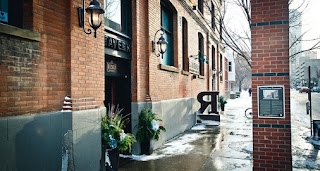 |
| Coca-Cola sign, Kings Cross. Image by author. |
The entertainment district. Jane Jacobs
warned against the design of such districts because of their single use. Kings
Cross may be “the place to be” if you’re an 18-21 year old relishing the club
scene every Thursday to Saturday night, or if you work in the hospitality
industry such as club security, waitress, bartender, club or kebab/pizza
restaurant owner… haha. What is Kings Cross during the day? Not much. I took a
stroll down Kings Cross on a hot Sunday afternoon and remembered the area being
much more attractive at 11pm, liquored up and in the mood to bust a move. The
streets are packed with partiers from 9 pm until 4 am. The mini-Piccadilly
circus Coca-Cola Sign is all alight and dancing to the beat of the music
flooding out of the clubs. It is an exciting energy.
Come Sunday afternoon, the sour smells of
booze and puke invade your senses, the wide sidewalks are deserted and most
establishments are closed besides the odd little pub. Who would want to live on
the Cross or near it? Again, it you were a partier between the ages of 18 and
23, maybe. No young family, or business couple or old couple would set up house
in the Cross would they? Suburbia exists as a means of escaping the loud,
energetic city. I can hardly stand the traffic noise off Anzac Parade that
seeps into my apartment. Can you imagine trying to rock a crying baby to sleep
to the beat of the latest club tune? Hahaha, I can see the image now.
Because of the Cross’s primary use, it
attracts related business as stated above: bottle shops, kebab shops, all
manner of alcohol serving establishments playing a range of music but all
generally the same thing inside. The district is well connected to major
roadways for taxi, bus, and train. Every city needs an entertainment district,
but how do you make it appealing for occupants who remain after the clubs have
closed? Like those who live and work in the area. It is like a destination
theme park that brings people in from all over the Sydney region.
Like all districts, it lives a life cycle
of decline and regeneration. I argue it runs that cycle every single week.
Decline Sunday to Wednesday, alive Thursday to Sunday morning, and decline
again. A quick cycle like that supports this district, and maintains its importance
as an entertainment district in Sydney. Other areas like in the CBD separate
their clubs and charge huge cover costs to enter. The Cross offers a range of
venues no matter what your budget and easy access to.
Mentioned in article:
Jacobs, J. (2000). The death and life of
great American cities. London: Pimlico.
 |
| Kings Cross by day. |
Kings Cross by day. Image from http://prettysydneyphotodiary.com/2012/11/11/4/




















.JPG)










